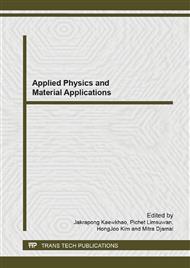p.315
p.319
p.323
p.327
p.331
p.335
p.339
p.343
p.346
Effects of Thermal and Cross-Track Variations for Longitudinal Heat-Assisted Magnetic Recording Systems
Abstract:
The current data recording technology is approaching its capacity limit approximately 1 Tbit/in2 (terabits per square inch) known as superparamagnetic limit. Heat-assisted magnetic recording (HAMR) is one of the promising technologies that is being planned to be used as a new data recording technology to achieve the storage capacity beyond 1 Tbit/in2. In HAMR, the laser is applied to heat a magnetic medium during the writing process, which results in the unique transition characteristics if compared to a conventional system. This paper investigates the effects of thermal and cross-track variations to the transition characteristics (both transition center and transition parameter) of longitudinal HAMR systems. Experimental results indicate that the longitudinal HAMR system can withstand some amount of thermal and cross-track variations and still provides satisfactory system performance.
Info:
Periodical:
Pages:
331-334
Citation:
Online since:
September 2013
Price:
Сopyright:
© 2013 Trans Tech Publications Ltd. All Rights Reserved
Share:
Citation:


